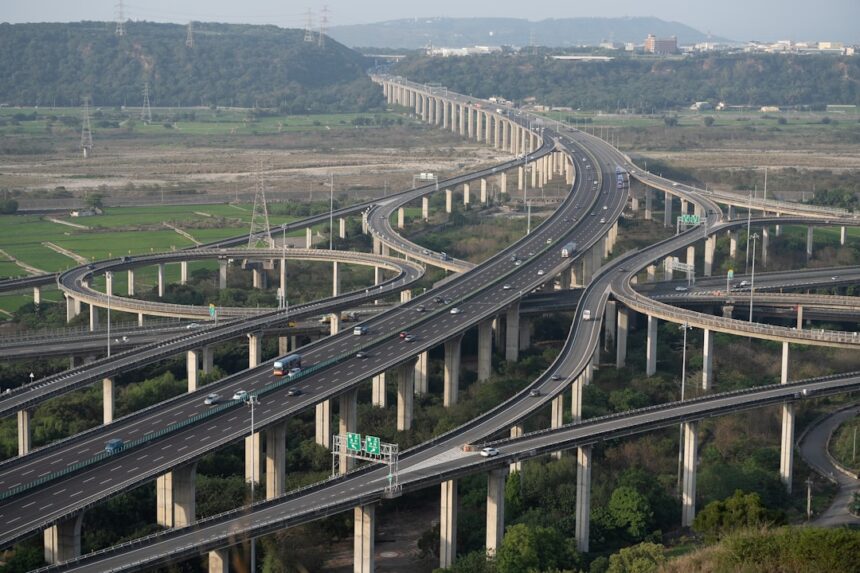Securing critical national infrastructure (CNI) is paramount for the stability and safety of any nation. CNI encompasses essential systems and assets that are vital for the functioning of society, including transportation networks, energy grids, water supply systems, and communication networks. The disruption of these infrastructures can lead to catastrophic consequences, affecting not only the economy but also public health and safety.
As societies become increasingly dependent on technology and interconnected systems, the need for robust security measures becomes even more pressing. A failure in any one of these sectors can have a cascading effect, leading to widespread chaos and disruption. Moreover, the importance of securing CNI extends beyond immediate physical threats.
In an era where cyber threats are on the rise, the potential for cyberattacks to compromise critical infrastructure has become a significant concern. Cybersecurity breaches can lead to data theft, operational disruptions, and even physical damage to infrastructure. Therefore, ensuring the security of CNI is not just about protecting physical assets; it is also about safeguarding the information and systems that underpin modern society.
The implications of neglecting this responsibility can be dire, making it imperative for both public and private sectors to prioritize the security of critical infrastructure.
Key Takeaways
- Securing critical national infrastructure is essential for national security and public safety.
- Vulnerabilities in critical national infrastructure can be exploited by malicious actors, leading to severe consequences.
- Government plays a crucial role in establishing and enforcing regulations to secure critical national infrastructure.
- The private sector is responsible for implementing security measures and investing in infrastructure protection.
- Best practices for securing critical national infrastructure include regular risk assessments, employee training, and implementing robust cybersecurity measures.
Understanding the Vulnerabilities of Critical National Infrastructure
Understanding the vulnerabilities inherent in critical national infrastructure is essential for developing effective security strategies. These vulnerabilities can arise from various sources, including outdated technology, lack of investment in maintenance, and insufficient training for personnel. Many infrastructures were designed decades ago and may not have been updated to withstand modern threats, whether they be physical attacks or cyber intrusions.
This outdated technology can create significant gaps in security that malicious actors can exploit. Additionally, human factors play a crucial role in the vulnerabilities of CNI. Insider threats, whether intentional or accidental, can lead to significant breaches in security.
Employees may inadvertently expose systems to risks through negligence or lack of awareness regarding security protocols. Furthermore, the increasing complexity of interconnected systems means that a vulnerability in one area can have far-reaching implications across multiple sectors. Understanding these vulnerabilities is the first step toward implementing comprehensive security measures that address both technological and human factors.
The Role of Government in Securing Critical National Infrastructure

Governments play a pivotal role in securing critical national infrastructure through policy-making, regulation, and resource allocation. They are responsible for establishing frameworks that dictate how infrastructure should be protected and what standards must be met. This includes creating legislation that mandates cybersecurity measures for critical sectors and providing funding for research and development of new technologies aimed at enhancing security.
By setting these standards, governments can ensure a baseline level of protection across various industries. In addition to regulatory measures, governments must also engage in active collaboration with private sector entities that manage much of the nation’s critical infrastructure. This partnership is essential for sharing information about threats and vulnerabilities, as well as best practices for mitigating risks.
Governments can facilitate training programs and simulations to prepare both public and private sector employees for potential crises. By taking a proactive approach to securing CNI, governments can help create a resilient infrastructure capable of withstanding both current and future threats.
The Role of Private Sector in Securing Critical National Infrastructure
| Metrics | Data |
|---|---|
| Investment in security measures | Increased investment by private sector in securing critical national infrastructure |
| Cybersecurity incidents | Number of cybersecurity incidents reported in critical national infrastructure sectors |
| Collaboration with government | Level of collaboration and partnership between private sector and government agencies in securing critical national infrastructure |
| Regulatory compliance | Percentage of private sector organizations compliant with government regulations for securing critical national infrastructure |
The private sector is integral to the security of critical national infrastructure, as many essential services are owned and operated by private companies. These entities are responsible for implementing security measures that protect their assets from both physical and cyber threats.
This includes adopting best practices in cybersecurity, conducting regular risk assessments, and maintaining up-to-date incident response plans. Moreover, collaboration between private companies and government agencies is crucial for enhancing overall security. Private sector organizations often possess specialized knowledge and expertise that can be invaluable in identifying vulnerabilities and developing effective security strategies.
By participating in public-private partnerships, companies can share insights on emerging threats and collaborate on solutions that benefit both parties. This cooperative approach not only strengthens individual organizations but also fortifies the entire national infrastructure against potential disruptions.
Best Practices for Securing Critical National Infrastructure
Implementing best practices for securing critical national infrastructure is essential for mitigating risks and enhancing resilience. One fundamental practice is conducting regular risk assessments to identify vulnerabilities within systems and processes. These assessments should evaluate both physical security measures and cybersecurity protocols to ensure comprehensive protection.
By understanding where weaknesses lie, organizations can prioritize their resources effectively and address the most pressing threats. Another best practice involves fostering a culture of security awareness among employees. Training programs should be established to educate staff about potential risks and the importance of adhering to security protocols.
Regular drills and simulations can help prepare employees for real-world scenarios, ensuring they know how to respond effectively in case of an incident. Additionally, organizations should establish clear communication channels for reporting suspicious activities or potential breaches, creating an environment where security is everyone’s responsibility.
The Impact of Cybersecurity on Critical National Infrastructure

The impact of cybersecurity on critical national infrastructure cannot be overstated. As technology continues to evolve, so do the tactics employed by cybercriminals seeking to exploit vulnerabilities within these systems. A successful cyberattack on CNI can lead to severe consequences, including operational disruptions, financial losses, and damage to public trust.
For instance, a breach in a power grid’s cybersecurity could result in widespread blackouts, affecting millions of people and crippling essential services. Furthermore, the interconnected nature of modern infrastructure means that a single vulnerability can have far-reaching implications across multiple sectors. A cyberattack on one system may inadvertently compromise others due to their interdependencies.
This highlights the necessity for robust cybersecurity measures that not only protect individual assets but also consider the broader implications of interconnected systems.
The Importance of Collaboration in Securing Critical National Infrastructure
Collaboration is vital in securing critical national infrastructure, as no single entity can address the myriad challenges posed by modern threats alone. Effective security requires cooperation between government agencies, private sector organizations, and international partners. By sharing information about emerging threats and best practices, stakeholders can develop more effective strategies for mitigating risks.
This collaborative approach fosters a sense of shared responsibility for protecting national interests. Moreover, joint exercises and simulations can enhance preparedness across sectors by allowing participants to practice their response to potential incidents in a controlled environment. These collaborative efforts not only improve individual organizations’ readiness but also strengthen the overall resilience of national infrastructure.
By working together, stakeholders can create a more secure environment that benefits everyone involved.
The Role of Technology in Securing Critical National Infrastructure
Technology plays a crucial role in securing critical national infrastructure by providing advanced tools and solutions designed to detect and mitigate threats. Innovations such as artificial intelligence (AI), machine learning, and blockchain technology are increasingly being integrated into security protocols to enhance monitoring capabilities and improve response times. For instance, AI-driven analytics can help identify unusual patterns or anomalies within network traffic that may indicate a cyber threat.
Additionally, technology enables organizations to implement more robust access controls and authentication measures to protect sensitive information from unauthorized access. The use of biometric identification systems or multi-factor authentication can significantly reduce the risk of breaches caused by compromised credentials. As technology continues to advance, it will be essential for organizations to stay abreast of new developments and incorporate them into their security strategies.
The Economic and Social Impact of Inadequate Infrastructure Security
Inadequate security measures for critical national infrastructure can have profound economic and social repercussions. A successful attack on CNI can lead to significant financial losses for businesses and governments alike due to operational disruptions and recovery costs. For example, a cyberattack on a financial institution could result in millions of dollars lost in transactions while eroding consumer confidence in the system as a whole.
Socially, the consequences can be even more severe. Disruptions to essential services such as water supply or healthcare can jeopardize public health and safety, leading to widespread panic and unrest. Communities may suffer long-term effects from inadequate infrastructure security as trust in institutions erodes and citizens become increasingly aware of vulnerabilities within their systems.
Therefore, investing in robust security measures is not just a matter of protecting assets; it is also about safeguarding societal stability.
The Future of Securing Critical National Infrastructure
The future of securing critical national infrastructure will likely be shaped by ongoing advancements in technology and an evolving threat landscape. As cyber threats become more sophisticated, organizations will need to adopt proactive measures that anticipate potential risks rather than merely reacting to incidents after they occur. This may involve leveraging emerging technologies such as quantum computing or advanced encryption methods to enhance data protection.
Furthermore, as global interconnectivity increases, international cooperation will become increasingly important in addressing shared challenges related to CNI security. Collaborative efforts among nations will be essential for developing standardized protocols and sharing intelligence on emerging threats. By fostering a culture of collaboration at both national and international levels, stakeholders can work together to create a more secure future for critical national infrastructure.
Prioritizing the Security of Critical National Infrastructure
In conclusion, prioritizing the security of critical national infrastructure is essential for ensuring the stability and safety of society as a whole. With increasing reliance on interconnected systems and technology, the vulnerabilities associated with CNI must be addressed through comprehensive strategies involving both government and private sector collaboration. By understanding these vulnerabilities, implementing best practices, leveraging technology, and fostering cooperation among stakeholders, nations can build resilient infrastructures capable of withstanding current and future threats.
As the landscape continues to evolve with new challenges emerging daily, it is imperative that all parties involved remain vigilant and proactive in their efforts to secure critical national infrastructure. The consequences of neglecting this responsibility are too great to ignore; therefore, investing in robust security measures should be viewed not just as an obligation but as a necessity for safeguarding public welfare and maintaining societal stability.
Securing critical national infrastructure is a paramount concern for governments and organizations worldwide, as these systems are essential for maintaining national security, economic stability, and public safety. A related article that delves into strategies and technologies for protecting these vital assets can be found on the “In The War Room” website. This article provides insights into the latest advancements in cybersecurity measures, risk management frameworks, and collaborative efforts between public and private sectors to safeguard infrastructure from emerging threats. For more detailed information, you can read the full article by visiting In The War Room.
🔍WATCH THIS! The Secret Weakness That Will Break The US Military🧭
FAQs
What is critical national infrastructure?
Critical national infrastructure refers to the essential systems and assets that are vital for the functioning of a country, including energy, transportation, water, and communication networks.
Why is securing critical national infrastructure important?
Securing critical national infrastructure is important to ensure the safety, security, and resilience of a country’s essential systems and assets against potential threats such as cyber attacks, natural disasters, and terrorist activities.
What are the potential threats to critical national infrastructure?
Potential threats to critical national infrastructure include cyber attacks, physical attacks, natural disasters, and insider threats. These threats can disrupt essential services and cause significant damage to a country’s economy and security.
How can critical national infrastructure be secured?
Critical national infrastructure can be secured through a combination of measures, including implementing robust cybersecurity protocols, conducting regular risk assessments, investing in advanced technology and infrastructure, and collaborating with government agencies and private sector partners.
What role does the government play in securing critical national infrastructure?
The government plays a crucial role in securing critical national infrastructure by developing and enforcing regulations, providing guidance and support to infrastructure operators, and coordinating with various stakeholders to enhance the resilience of essential systems and assets.
What are some examples of critical national infrastructure?
Examples of critical national infrastructure include power plants, transportation networks (such as airports and railways), water treatment facilities, communication systems, and financial institutions. These systems and assets are essential for the functioning of a country’s economy and society.




